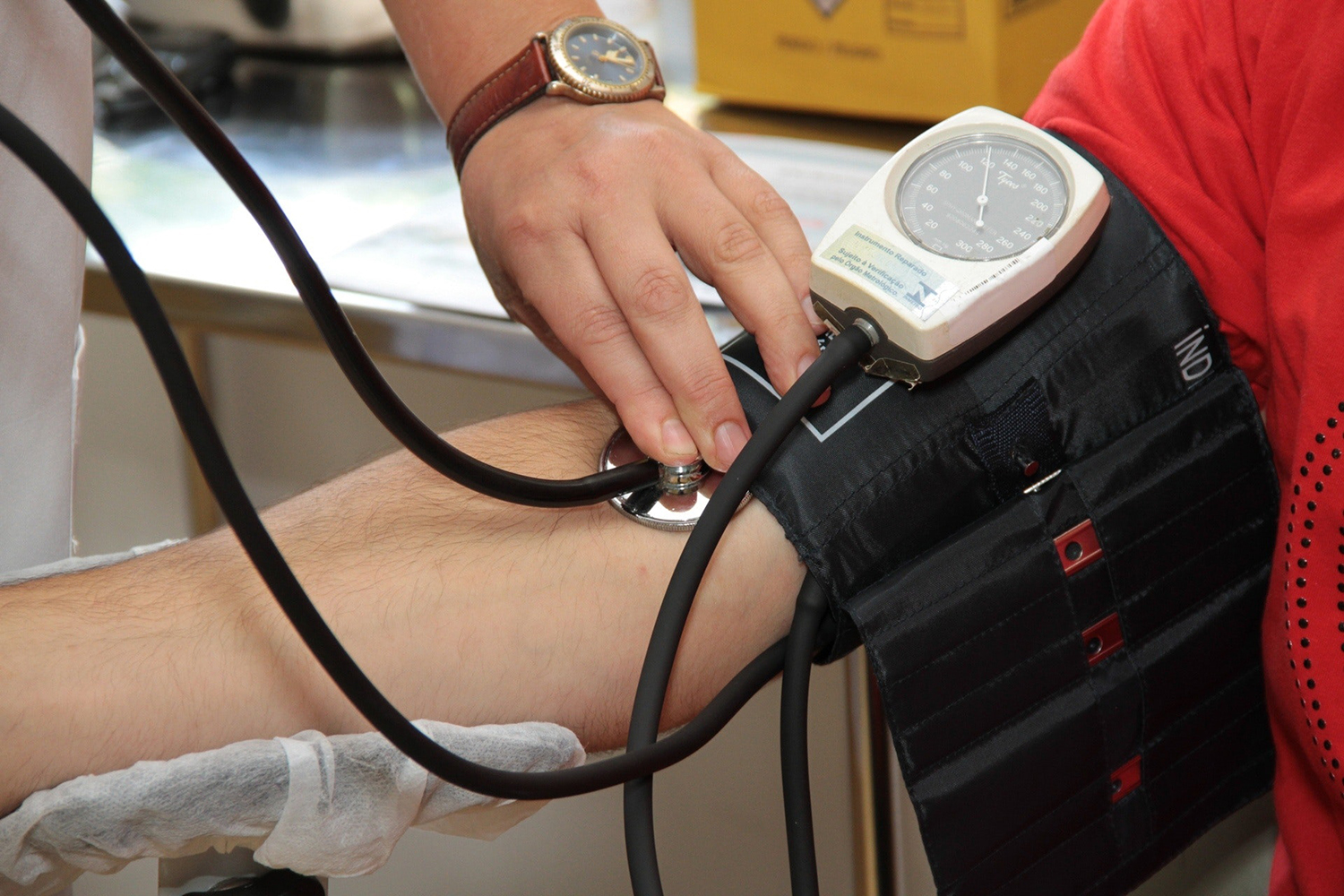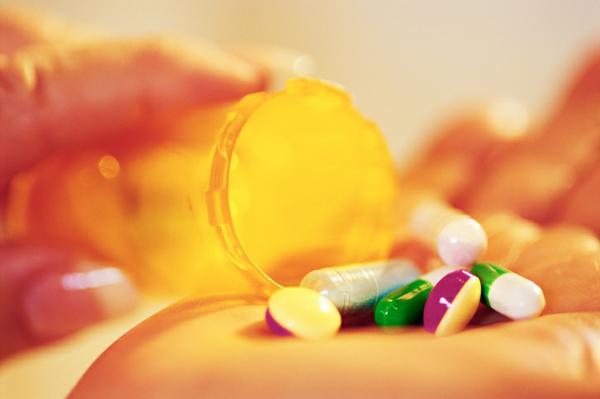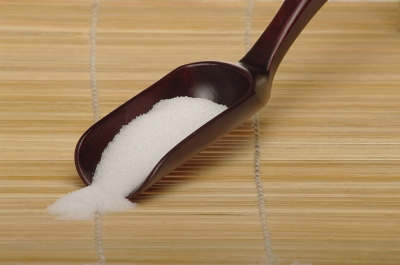5 Step Plan for Blood Pressure Management

High blood pressure is fairly common, especially with an increase in age. Based on new blood pressure guidelines almost 50% of American adults have high blood pressure. Your blood pressure depends on how much blood your heart is pumping, and the resistance in your arteries which allows the blood to flow. The narrower your arteries, the higher your blood pressure.
High blood pressure puts more strain on your heart because it has to work harder, and can cause damage to your arteries. Risk factors include obesity, smoking, family history, and drinking too much alcohol. In some cases, the cause is unknown. This condition is known as the “silent killer” because there are not usually noticeable symptoms. You may live with high blood pressure for years and not know. Uncontrolled high blood pressure over time can damage your heart, lungs, blood vessels, brain, and kidneys putting you at higher risk for heart disease, stroke, and kidney disease.
Up to age 45, men are more likely to have high blood pressure than women, and by age 65, it’s more common in women.
Here is a 5 Step Plan for Managing Blood Pressure through lifestyle choices:
1. Maintain a Healthy Weight
Blood pressure often increases as weight increases. According to the American Heart Association, a healthy BMI between 18.5-24.9 is the goal. Losing just 10 pounds can help reduce or prevent high blood pressure. Your caloric intake to lose weight safely should be discussed with your dietitian and each case should be individualized. Increasing the amount of exercise with the appropriate daily caloric intake can help promote a healthy weight. Weight loss in overweight and obese patients lowers diastolic and systolic blood pressure by 5 mmHg.
Keep in mind more weight around the waistline puts you at a greater risk of high blood pressure. In general, men are at risk if their waist measurement is greater than 40 inches and women are at risk if their waist measurement is greater than 35 inches. These numbers can vary and should be monitored.
2. Monitor Blood Pressure at Home
Your blood pressure is measured in millimeters of mercury (mmHg). A normal blood pressure is around 120/80 mmHg or less. Normal levels can fall below this, yet consistent readings above this can lead to a high blood pressure diagnosis. The top number of the reading is called the systolic and shows the pressure in your blood vessels when your heart beats. The lower number is called the diastolic and it measures the pressure at rest between heartbeats when the heart refills with blood.
If you are diagnosed with high blood pressure discuss your personal blood pressure goal with your doctor. Blood pressure readings above 120/80 mm Hg are considered elevated and above 130/80 mmHg is Stage I Hypertension.
By monitoring your blood pressure at home, you will monitor trends more consistently and be able to supplement the readings taken by your doctor for a more accurate picture of your blood pressure.
Continue reading
Is coffee safe to drink with high blood pressure?

According to the Department of Nutritional Sciences at Pennsylvania State University, most people over the age of 35 consume at least 200 mg of caffeine daily.
Caffeine is like any other drug and comes with side effects.
Potential side effects include:
- Migraine headaches
- Insomnia
- Nervousness
- Irritability
- Restlessness
- Frequent urination or inability to control urination
- Stomach upset
- Fast heartbeat
- Muscle tremors
One 8-ounce cup of brewed coffee contains 91 mg of caffeine.
Blood pressure benefits of avocado seeds

Avocados provide monounsaturated fats, the omega-3 fatty acid alpha-linoleic acid, vitamin B6, pantothenic acid, folic acid, magnesium, potassium, beta-sitosterols, and vitamin E… all of which add up to equal a heart healthy addition to your diet rich in antioxidants to reduce inflammation.
However, all the above refers to the flesh of the avocado. What about the large seed, which most of us tend to scoop out and throw away?
An avocado seed can be consumed by removing the fine layer of brown skin and then grating it or using a coffee bean grinder to grind it into a powder.
This powder can then be added to soups, salads, stews, pasta/rice dishes, smoothies and baked goods.
A viral Facebook video showed how to peel, chop, and pulverize the seed adding fuel to the idea of the avocado seed being a type of “super food”.
There is some argument regarding the positive health benefits of avocado seeds.
Avocado seeds contain protein, fiber, calcium, magnesium, potassium, flavonoids, and phenols.
Potassium to lower blood pressure
What is the best time to take blood pressure medication?
 According to the Centers for Disease Control and Prevention, 75 million Americans have high blood pressure (32% of Americans).
According to the Centers for Disease Control and Prevention, 75 million Americans have high blood pressure (32% of Americans).
Antihypertensive medication is a commonly prescribed treatment plan to control high blood pressure. There are many blood pressure medication types and each works in a different way to lower blood pressure.
Approximately 50% of patients do not take their medications as prescribed, which reduces treatment effectiveness. It is important to take your blood pressure medication exactly as it is prescribed.
Over the years, research has investigated the effect of taking blood pressure medication in the morning versus before bed.
High Salt Diet Impacts More Than Blood Pressure

If your blood pressure is normal, that does not mean you can ignore how much salt you consume.
A high salt diet leads to:
- Reduced functioning of the endothelium. The endothelium is the inner lining of blood vessels which mediates coagulation, immune function, and platelet adhesion.
- Stiffening of arteries. The stiffer the arteries, the harder the heart works.
- Enlargement of the muscle tissue comprising the wall of the heart’s main pumping chamber. This enlargement can cause the heart to not pump blood with optimal force and efficiency.
- Impaired sodium-potassium balance causing reduced kidney function.
- Increased calcium excretion into the urine increasing risk for kidney stones and osteoporosis.
- Increased risk for stomach cancer. Research has determined salt and salty foods to be a “probable cause of stomach cancer.”
- Weight gain connected to salty foods leads to thirst and consumption of high sugar beverages to alleviate thirst.
- Bloating and water retention.
- Aggravated asthma symptoms.
- Worsening Meniere’s Disease symptoms, such tinnitus and hearing loss connected to fluid retention resulting in increased inner ear pressure.
Adjust your diet to reduce salt intake.
Nearly three-quarters of the salt in our diet comes from processed foods. Restaurant meals tend to be higher in sodium than meals prepared at home.
When is it normal for blood pressure to increase?

While your ideal average blood pressure is below 120/80 mm Hg, blood pressure fluctuates throughout the day depending on what you are doing. Every time your blood pressure spikes does not necessarily equal a medical emergency.
Exercise
During exercise your muscles demand more oxygen. To meet this need, the heart must pump with increased force to deliver more oxygenated blood with each contraction. As the heart’s workload increases during exercise, systolic blood pressure increases. Systolic blood pressure is the top blood pressure reading and measures the force against artery walls when the heart pumps. It is normal for systolic blood pressure to range between 160 and 220 during exercise.
The diastolic blood pressure, or the bottom number, typically does not change during exercise. Diastolic pressure measures the force against artery walls in between contractions. If your diastolic blood pressure increases during exercise by more than 20 mm Hg or becomes greater than 100 mm Hg, stop exercising and consult your doctor.
Continue reading



